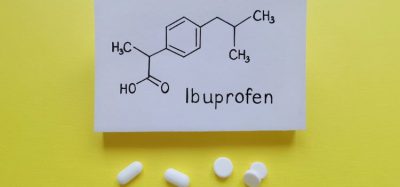Are thermally stable, ensilicated vaccines the future for childhood inoculations?
Posted: 10 June 2020 | Hannah Balfour (European Pharmaceutical Review) | No comments yet
Coating the tetanus portion of the DTP vaccine in silica rendered it thermally stable up to 100°C and able to be distributed without refrigeration.


By coating elements of the DTP (diphtheria, tetanus and pertussis) vaccine with silica, researchers have found a way to thermally stabilise the vaccine for transport.
Vaccines are notoriously difficult to transport to remote or dangerous places, as the formulations must be kept between 2°C and 8°C. Any deviation can spoil the vaccine, especially heat which can cause protein denaturation making the vaccines ineffective. As a result, millions of children around the world miss out on life-saving inoculations.
However, scientists have identified that by ensilicating (coating in silica) proteins within the vaccine, the structure remains intact even when heated to 100°C or stored at room temperature for up to three years.
The technique developed by a collaboration between the University of Bath and the University of Newcastle, was demonstrated in the lab two years ago and was recently used to post samples of the tetanus vaccine without refrigeration.
In their latest study, published in Scientific Reports, the researchers sent both ensilicated and regular samples of the tetanus vaccine from Bath to Newcastle by ordinary post (a journey time of over 300 miles, which by post takes a day or two). When doses of the ensilicated vaccine were subsequently injected into mice, an immune response was triggered, showing the vaccine was active. No immune response was detected in mice injected with unprotected doses of the vaccine, indicating the medicine had been damaged in transit.
Dr Asel Sartbaeva, who led the project from the University of Bath’s Department of Chemistry, said: “This is really exciting data because it shows us that ensilication preserves not just the structure of the vaccine proteins but also the function – the immunogenicity.
“This project has focused on tetanus, which is part of the DTP (diphtheria, tetanus and pertussis) vaccine given to young children in three doses. Next, we will be working on developing a thermally-stable vaccine for diphtheria, and then pertussis. Eventually we want to create a silica cage for the whole DTP trivalent vaccine, so that every child in the world can be given DTP without having to rely on cold chain distribution.”
Vaccines currently have to be shipped using cold chain distribution, to ensure they are refrigerated from the moment of manufacturing to the endpoint destination.
Dr Sartbaeva estimates that ensilicated vaccines could be used for humans within five to 15 years. She hopes the technology to wrap proteins with silica – a non-toxic, inorganic material – will eventually be adopted to store and transport all childhood vaccines. “Ultimately, we want to make important medicines stable so they can be more widely available,” she said. “The aim is to eradicate vaccine-preventable diseases in low income countries by using thermally stable vaccines and cutting out dependence on cold chain.”
Currently, up to 50 percent of vaccine doses are discarded before use due to exposure to suboptimal temperatures. According to the World Health Organisation (WHO), 19.4 million infants did not receive routine life-saving vaccinations in 2018.
Related topics
Biologics, Biopharmaceuticals, Distribution & Logistics, Formulation, Proteins, QA/QC, Vaccines, Viruses
Related organisations
Newcastle University, University of Bath, World Health Organisation (WHO)









